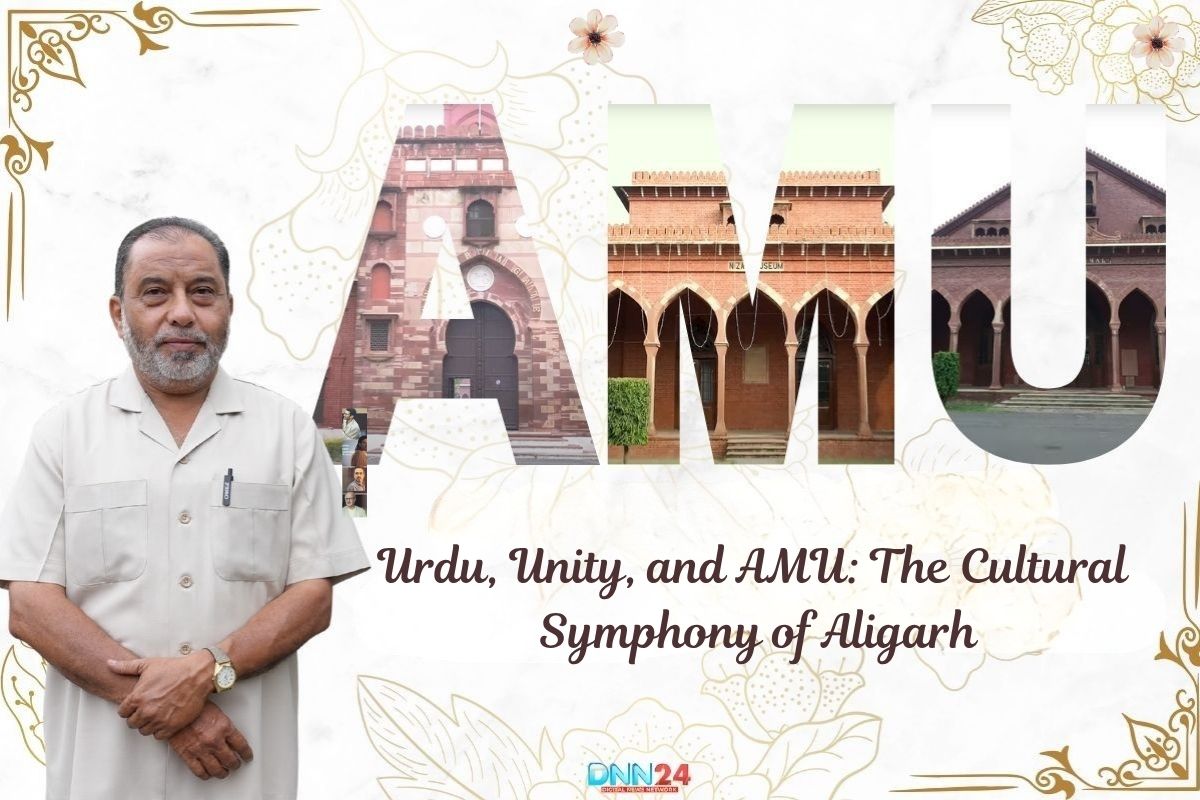A mention of Urdu literature, the fragrance of ghazals fills the small lanes of Aligarh. AMU is not just a university; it’s a living centre of Urdu literature, where culture, poetry, and education have come together to create a beautiful tradition. Shahriyar to Bashir Badr – All the home-grown poets have afforded Urdu a new hue and perspective.
Dr. Shariq Aqil, Chief Medical Officer at AMU, beautifully captures this essence when he says, Urdu is the language of love, and this world is the emperor of love. His deep connection with AMU and Urdu literature represents the living tradition of Ganga-Jamuni tehzeeb that has flourished here for over a century.
The connection between Aligarh and Urdu is relative to that of jasmine and mogra; neither is complete without the other, and they will always have a sweet smell. The difference in religion and background can bring students together under one roof, creating not only educational excellence but also a sense of unity that fosters the blending of cultures, forming a beautiful India. This is the magic of AMU’s Ganga-Jamuni culture.
United Aligarh and Urdu
Dr. Shariq Aqil’s journey reflects the deep connection between AMU and Urdu literature. As both a student and later a faculty member of this great institution, he embodies the tradition of the institution. His words strike a profound and significant truth: Urdu and Aligarh are like good friends; they cannot be parted.
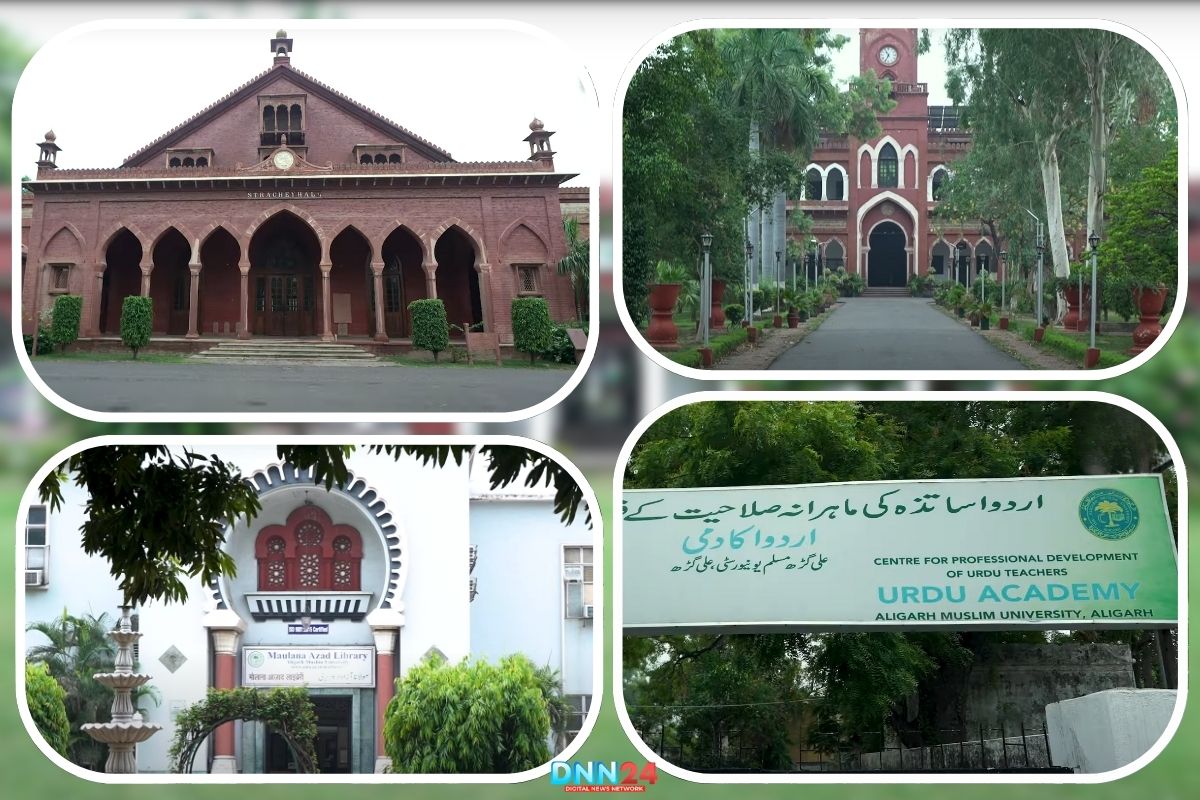
The university has produced literary giants who have left their mark on Urdu literature across generations. From Hali, who was born twenty years after Sir Syed Ahmad Khan, to Shibli Nomani, who came twenty years after Hali, AMU has been the nurturing ground for exceptional talent. These luminaries didn’t just write poetry; they created movements that awakened society and preserved cultural heritage.
The list of distinguished alums reads like a who’s who of Urdu literature: Josh Malihabadi, Fani Badayuni, Shakeel Badayuni, Sahil Ludhianvi, Janisar Akhtar, Ali Sardar Jafri, Shahriyar, Rashid Ahmad Siddiqui, Qazi Abdul Ghaffar, and many others. Each name represents a different facet of Urdu’s rich literary tradition, all connected by the golden thread of AMU’s educational philosophy.
The Role of Urdu in AMU’s Foundation and Ganga-Jamuni Culture
The foundation stone of AMU tells a remarkable story of unity and inclusiveness. On January 8, 1877, when the foundation stone of MAO College was laid, three distinguished personalities graced the stage: Sir Syed Ahmad Khan (a Muslim), Raja Shambhu Narayan (a Hindu Brahmin), and Lord Lytton (a Christian). This powerful image embodies the very essence of Ganga-Jamuni culture, where diverse faiths and communities unite for a noble common cause.
Dr. Aqil beautifully explains this concept with his couplet: “Chameli aur bele se to bas guldaan mehkegaa, jo hum sab milke baithenge to Hindustan mehkegaa” (Jasmine and mogra will only perfume the vase, but when we all sit together, India will be fragrant). This philosophy has been the guiding principle of AMU since its inception.
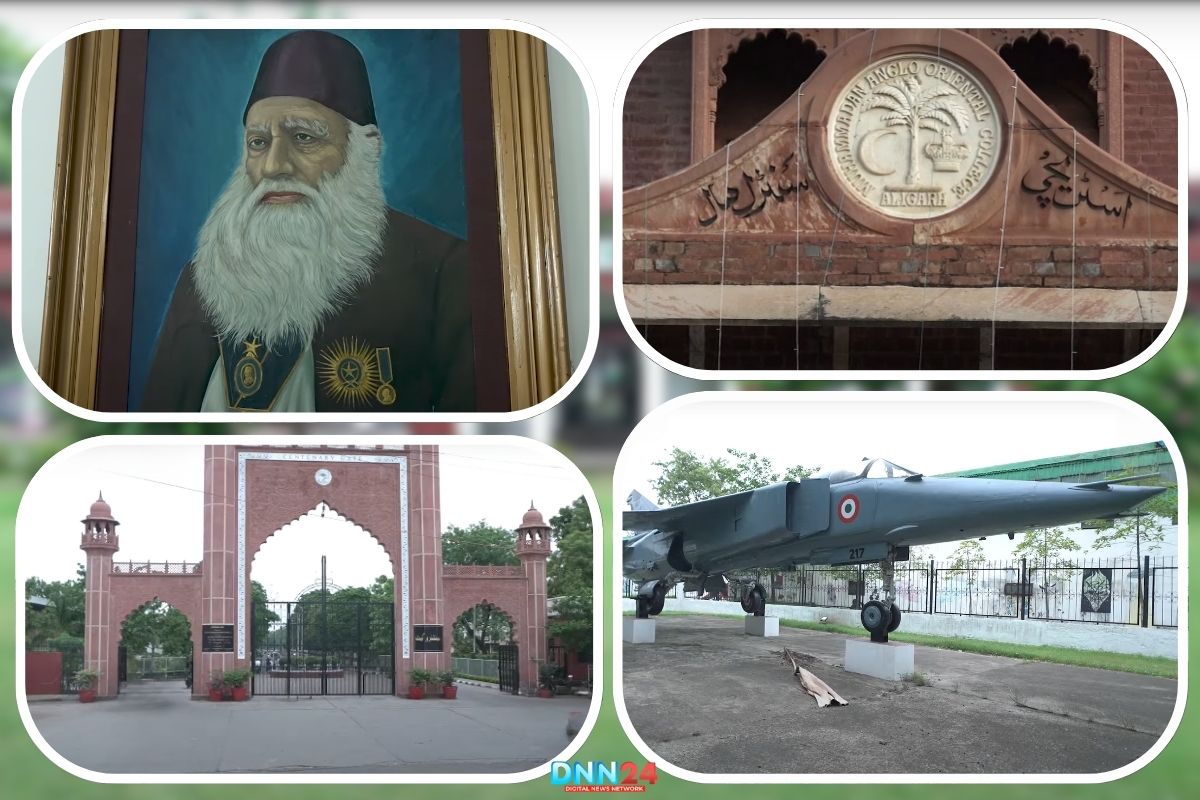
Sir Syed Ahmad Khan, as the founder of contemporary Urdu prose, knew the influence of the language in the rebirth of society. His Urdu writings enlightened the masses and provided them with a light to move forward in a community already reeling from the aftermath of the catastrophic 1857 events. The pen was mightier than the sword, and Urdu became the medium of social reformation and enlightenment.
The Tradition of Literature and Contemporary Demands
The university’s commitment to preserving Urdu literature while embracing modernity is evident in its educational approach. Dr. Aqil mentions that Sir Syed established the Students’ Debating Club in 1884, modeled after the clubs at Oxford and Cambridge, recognizing the importance of communication skills and linguistic proficiency.
Today, AMU houses what is considered the world’s largest Urdu department, continuing to produce scholars, poets, and writers who carry forward the literary tradition. The university organizes regular mushairas (poetry gatherings) on significant occasions, such as Republic Day and Independence Day, keeping the flame of Urdu poetry alive.
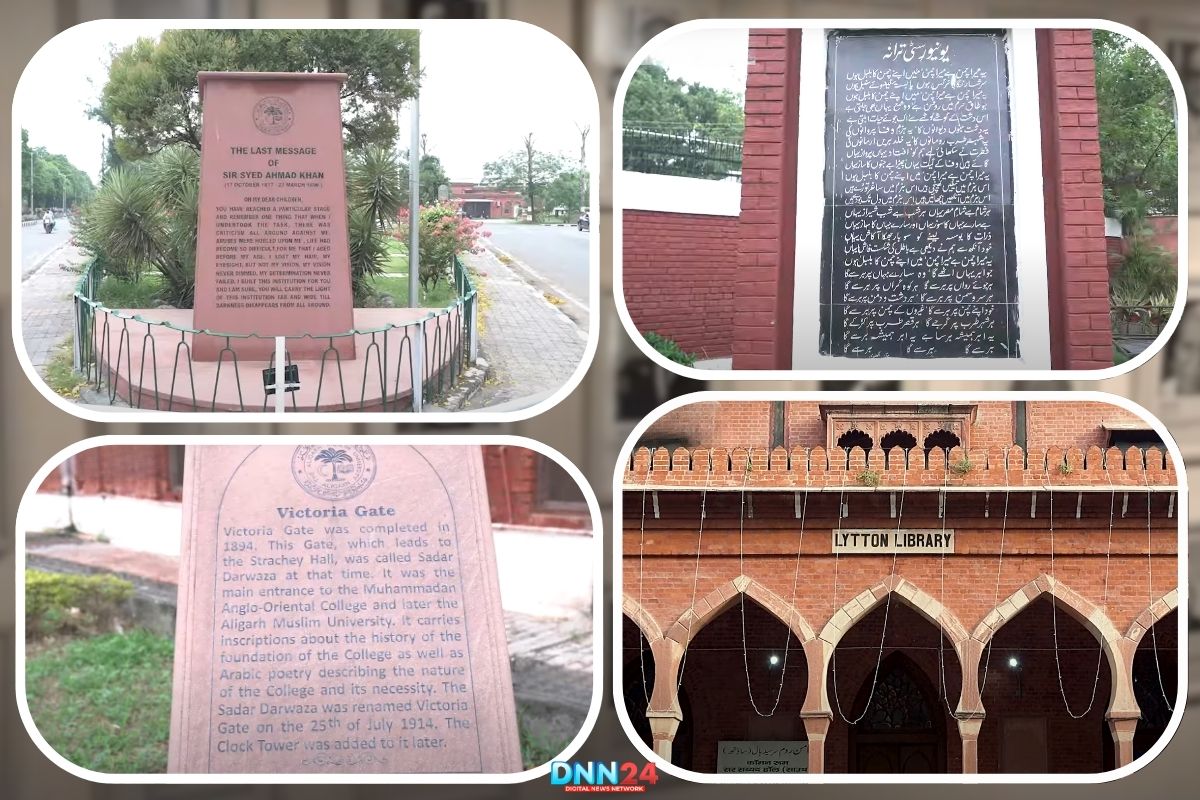
Contemporary poets and writers associated with AMU include Zafar Rasul (who heads the Urdu department at Jamia Millia Islamia), Ghaznafar (a renowned novelist and poet), Syed Mohammad Ashraf (a Sahitya Akademi Award winner), and faculty members such as Siraj Ajmali, Shabuddin Saqib, Moeed Rashidi, and Sarwar Sajid. These individuals ensure the continued development of this tradition and preserve its core values.
The Future of Urdu and AMU’s Role
Looking toward the future, Dr. Aqil remains optimistic about Urdu’s prospects at AMU. Nevertheless, he does not fail to recognize the pressures of the changing times. Students nowadays are less interested in language-oriented topics and foreign languages that can open doors to more employment opportunities. Urdu reading, like novel reading and literary magazine, which was the hallmark of the hostel, is dying.
However, there is still an infrastructure for Urdu literature. The university’s markets still prominently display Urdu books, and signboards in Urdu are visible throughout the campus. The trick is to help students retain a sense of belonging to their cultural heritage as they receive a modern education.
Dr. Aqil’s message to students is clear: “Learn all languages, but strengthen your relationship with Urdu because Urdu creates a complete personality. Urdu is not just a language; it’s a culture, a heritage that teaches refinement, etiquette, and sophistication.”
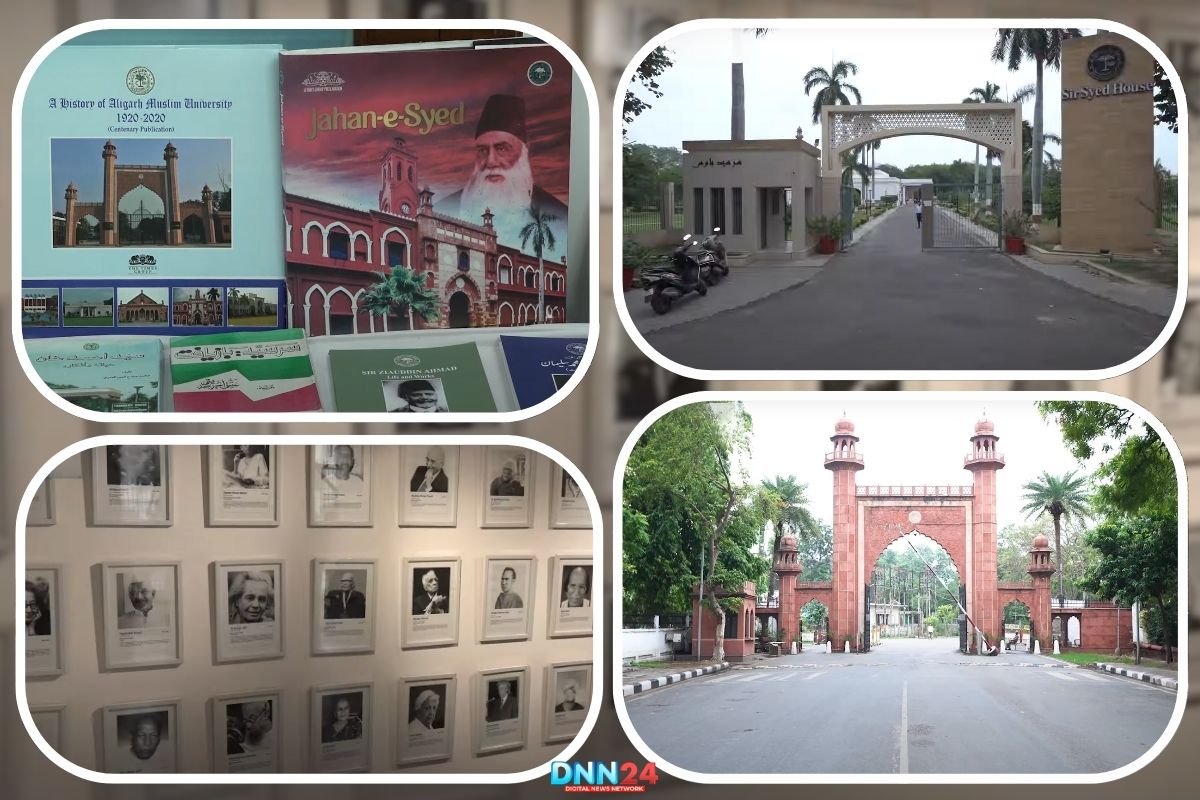
The responsibility doesn’t rest solely with the government or educational institutions. As Dr. Aqil poetically states, “Zulmate shikwa zulmate shab se to kahin achha tha, apne hisse ki koi shamma jalate jaate” (The darkness of complaint was better than the darkness of night; we should light our candles). Every person should play their role in preserving the Urdu language by reading the Urdu literature, newspapers, and magazines.
AMU stands as a beacon of hope for Urdu literature and Ganga-Jamuni culture. It is currently a negotiation about how various people can work together to achieve something beautiful and lasting, about how communities, each with its own intellectual horizon and cultural heritage, can coexist. As students from diverse backgrounds continue to study under its roof, they preserve the invaluable treasure of academic knowledge and the eternal principles of tolerance, love, and cultural compatibility that make India so amazing.
Also Read: Farooq Ahmad Bhat: Keeping Kashmir’s Chain Stitch Legacy Alive
You can connect with DNN24 on Facebook, Twitter, and Instagram and subscribe to our YouTube channel.

